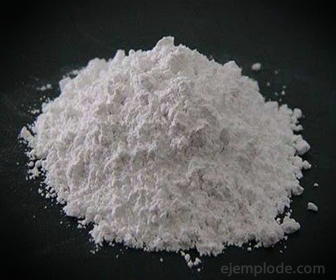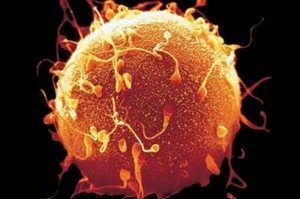Lime Uses
Chemistry / / July 04, 2021
The Lime is a solid substance, in the form of a very fine white powder. It is mainly composed of the Chemical Element Calcium, and is found in two main varieties: Quicklime, which is formed by Calcium Oxide (CaO), Y Slaked lime, formed by Calcium Hydroxide [Ca (OH)2].
Quicklime or Calcium Oxide
Calcium Oxide is formed when Calcium is burned in air. On a large scale it is produced by heating limestone (Calcium Carbonate CaCO3) in large lime kilns called Caleras:
Thief3 -> (reversible) CaO + CO2 - 21,000 calories
The reaction is reversible, as the above equation indicates. Equilibrium is reached when in contact with limestone and lime there is a certain concentration or partial pressure of Carbon Dioxide CO2.

The equilibrium pressure is called "Decomposition Pressure" of Calcium Carbonate. If at any temperature the Partial Pressure of CO2 is lower than the equilibrium value, the limestone will decompose to increase said pressure to the equilibrium value.
On the other hand, if the Partial Pressure is higher than the equilibrium, the Lime will combine with the Carbon Dioxide again, to form the Carbonate, and the Pressure will drop to the equilibrium value.
In the manufacture of lime, the Carbon Dioxide Partial Pressure remains lower than Equilibrium, insufflating through the oven a stream of air that carries the CO2 and maintains a lean atmosphere from this gas.
Around the base of the furnace, Dutch furnace type hearths are arranged to subject the entire limestone load to the heat of the Combustion products; but without contacting the burning fuel.
It is avoided to raise the temperature too much in the furnace so that the sand of the limestone does not combine with the lime, forming slag. Lime produced at excessive temperature is called Dead Lime (burnt lime) and it goes out very slowly.

Lime is used to Prepare Cements and Mortars, on the Manufacture of Gas Powders; in the Tanning industry, to pluck skin; as well as for purify hard water, and in Agriculture for Neutralize acidic soils.
Slaked Lime or Calcium Hydroxide
Lime (CaO) reacts with Water (H2O), giving off a lot of heat. The product of the reaction is Calcium Hydroxide Ca (OH)2, and it's called Slaked lime:
CaO + H2O -> Ca (OH)2 + 15540 calories
The Live Lime obtained from pure Limestone is known for "Fat lime", and turns off easily. The one coming from limestone with clay or with Magnesium Carbonate MgCO3 it's called "lean lime", it fades slowly (sometimes not completely), and when used for mortar it takes time to set and has less mechanical resistance. However, it works more smoothly with the trowel and is therefore used in finishing operations.
Lime (CaO) exposed to the air slowly absorbs Carbon Dioxide CO2 and Water (H2OR). This material is called "Lime slaked in the air".

Mortar is obtained by mixing Lime Slaked with Sand and Water, forming a pasty mass. Exposed to air, it sets slowly, and as it hardens, it forms a porous material due to loss of water and adsorption of Carbon Dioxide.
Calcium Hydroxide is poorly soluble in Water, decreasing solubility with increasing temperature. The solution is called Lime Water. A suspension of Hydroxide in Water is called "Whitewash", which is sometimes used for whitewashing. Calcium Hydroxide Ca (OH)2 it is the cheapest of all the bases.
Examples of Lime Uses
As Calcium Oxide (CaO), to prepare Cements and Mortars
As Calcium Oxide (CaO), for the Manufacture of Gas Powders
As Calcium Oxide (CaO), to depilate skin in the Tanning industry
As Calcium Oxide (CaO), in Water Treatment, to purify hard water
As Calcium Oxide (CaO), in Agriculture, to Neutralize acidic soils
As Calcium Oxide (CaO), at the domestic level, to mitigate bad odors in organic waste
As Calcium Hydroxide [Ca (OH)2], to dye the trunks of the trees white, so that insects do not climb them
As Calcium Hydroxide [Ca (OH)2], under construction, as “Lechada de Cal”, to whitewash
As Calcium Hydroxide [Ca (OH)2], under construction, as “Mortar”, mixed with Sand and Water
As Calcium Hydroxide [Ca (OH)2], during spills of acid solutions, to neutralize the dispersed substance



